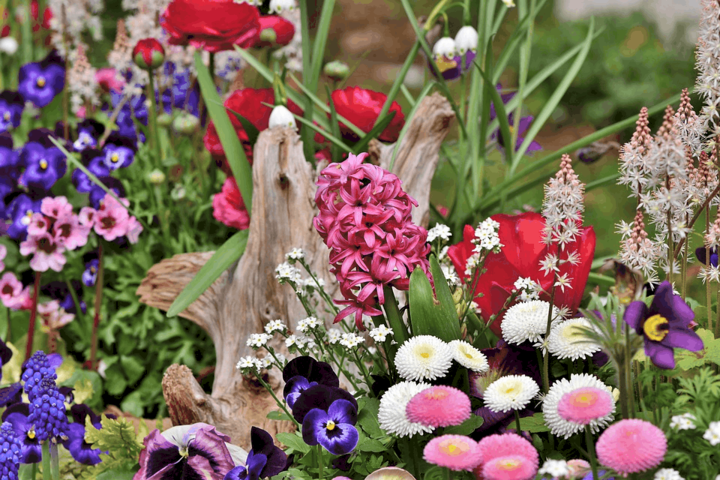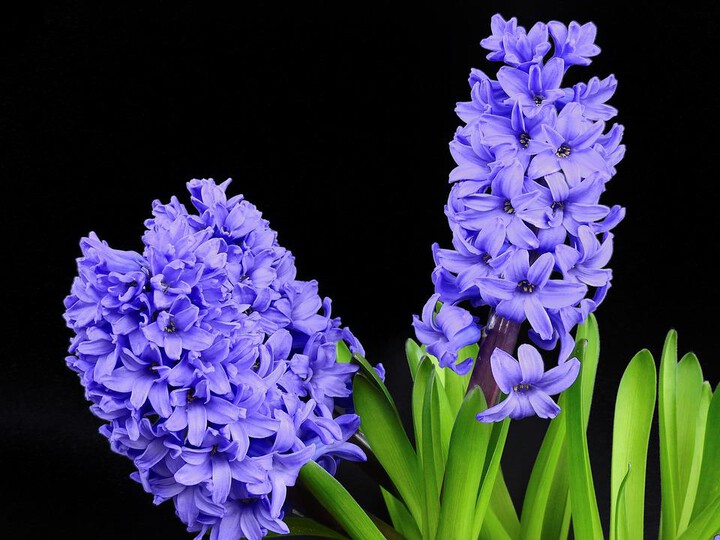When people think of spring, two types of flowers typically come to mind, hyacinths, and tulips. While very popular, not many people know that much about these tall spring blooms. Here’s all the information you need in order to grow your own beautiful hyacinths and hold your own in any conversation with fellow garden enthusiasts!

HYACINTH HISTORY
The official name, ‘hyacinthus orientalis’, has origins that can be traced back to Hyakinthos, a young Greek boy. According to legend, two Greek Gods, Apollo and Zephyr, both competed for Hyakinthos’ attention. Zephyr ended up killing Hyakinthos while in a jealous rage. The flowers that grew in the area where he passed away were named ‘hyacinth’ by Apollo. They represent consistency and sincerity, depending on the color.
TYPES OF HYACINTH
There are 30 different plants that fall under the genus hyacinthus.
Hyacinthus Orientalis, the common type of hyacinth, has flowers that open all the way up and tend to look like small starfishes. Muscari Botryoides are the group of hyacinth that resembles a bunch of grapes. Both types grow in the spring.
One of the nice things about these plants is that they can come in a variety of different colors. These include yellow, pink, white, orange, purple and blue. Overall, there are three different varieties of hyacinths that include:
·Single hyacinths have full heads and the Blue Giant is the most noticeable of this variety. It has light blue flowers and its veins are dark blue.
·Double hyacinths tend to grow at least 10 inches and their whorls are fluffy.
·Multiflora hyacinths have a loose arrangement and multiple flower stalks.
WHERE AND HOW HYACINTH GROW

Hyacinths usually grow in Zones 3-9. However, winter protection is required in Zones 3-5. They will bloom in March and April and need full sunlight with minimal shade to grow properly. These flowers can grow anywhere from 6-12 inches in height and have a maximum width of about 6 inches. Many individuals plant hyacinths in their gardens because they attract butterflies.
It’s best to plant them about 8 weeks before the first hard frost. This can be anywhere from September to November dependent on where you live. They need to be planted in an area that receives full sun and has sufficient drainage. Their roots can rot if there’s too much moisture. This is why they should be watered in moderation. The soil needs to dry out between waterings. It should only be kept slightly moist.
ISSUES
The biggest issue that gardeners have with hyacinths is the bulbs rotting. This is why it’s necessary to plant them in an area that doesn’t have excess moisture. Rodents also love to munch on the bulbs. This can be solved by planting them next to daffodils as they are a deterrent to many rodents.
FREQUENTLY ASKED QUESTIONS
Are Hyacinth poisonous to humans or animals?
Hyacinths are poisonous. Caution should be taken when planting them in areas where children or pets are present. Some animals, like dogs, tend to dig up newly planted bulbs. Wear gardening gloves when planting them as some people develop a rash from touching the bulbs.
Are hyacinths perennials or annuals?
It will depend on where you live. In warmer areas, they need to be dug up and pre-chilled if you wish to plant them again during the fall. In cooler climates, they may grow year after year if they are left in the ground and not disturbed.